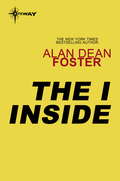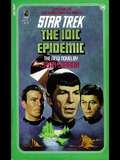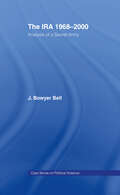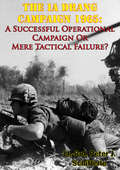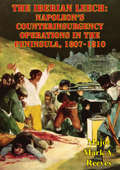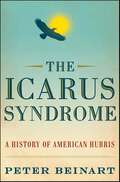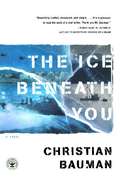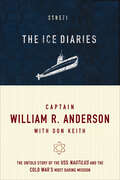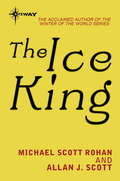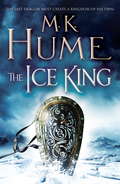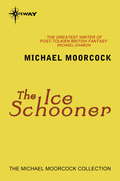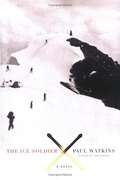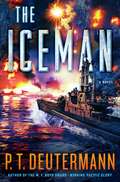- Table View
- List View
The Hydra Protocol
by David WellingtonTo prevent nuclear annihilation, wounded Special Forces operative Jim Chapel must infiltrate a top secret Russian military base and disable an unstable supercomputerA routine mission in Cuban waters to retrieve a hidden key code from a sunken Soviet submarine quickly changes course when Cuban officials are tipped off. It turns out that Nadia, the beautiful stranger who saves Chapel from being discovered, is actually a Russian agent, and her intel is shocking. Hidden during the Cold War, a forgotten Russian supercomputer controls hundreds of nuclear missiles, all aimed at the United States. Just one fail-safe error and America will be obliterated. And there have been glitches in the computer's programming. . . .To disarm Hydra before it plunges the United States into nuclear winter, Nadia and Chapel must travel across Eastern Europe and infiltrate a secret base hidden deep in the steppes of Central Asia. But as these uneasy allies discover, not everyone wants the weapon out of commission.Jim Chapel is out of his depth, and out of his element, but not out of the game.
The Hydra Protocol
by David WellingtonTo prevent nuclear annihilation, wounded Special Forces operative Jim Chapel must infiltrate a top secret Russian military base and disable an unstable supercomputerA routine mission in Cuban waters to retrieve a hidden key code from a sunken Soviet submarine quickly changes course when Cuban officials are tipped off. It turns out that Nadia, the beautiful stranger who saves Chapel from being discovered, is actually a Russian agent, and her intel is shocking. Hidden during the Cold War, a forgotten Russian supercomputer controls hundreds of nuclear missiles, all aimed at the United States. Just one fail-safe error and America will be obliterated. And there have been glitches in the computer's programming. . . .To disarm Hydra before it plunges the United States into nuclear winter, Nadia and Chapel must travel across Eastern Europe and infiltrate a secret base hidden deep in the steppes of Central Asia. But as these uneasy allies discover, not everyone wants the weapon out of commission.Jim Chapel is out of his depth, and out of his element, but not out of the game.
The Hydra Protocol
by David WellingtonTo prevent nuclear annihilation, wounded Special Forces operative Jim Chapel must infiltrate a top secret Russian military base and disable an unstable supercomputerA routine mission in Cuban waters to retrieve a hidden key code from a sunken Soviet submarine quickly changes course when Cuban officials are tipped off. It turns out that Nadia, the beautiful stranger who saves Chapel from being discovered, is actually a Russian agent, and her intel is shocking. Hidden during the Cold War, a forgotten Russian supercomputer controls hundreds of nuclear missiles, all aimed at the United States. Just one fail-safe error and America will be obliterated. And there have been glitches in the computer's programming. . . .To disarm Hydra before it plunges the United States into nuclear winter, Nadia and Chapel must travel across Eastern Europe and infiltrate a secret base hidden deep in the steppes of Central Asia. But as these uneasy allies discover, not everyone wants the weapon out of commission.Jim Chapel is out of his depth, and out of his element, but not out of the game.
The I Inside
by Alan Dean FosterFor over 100 years, the machine called Colligatarch had ruled the Earth. Its predictions of the future have proved so accurate that humans accepted its recommendations as the best course of action - until a young engineer in Phoenix begins to travel without authorization, enter secret places, assume aliases, and display super-human feats of strength. Is it because he has fallen in love? Or has he instead fallen into an interplanetary plot?
The IDIC Epidemic (Star Trek: The Original Series #38)
by Jean LorrahI.D.I.C.—Infinite Diversity in Infinite Combination. More than just a simple credo, for those of the planet Vulcan it is the cornerstone of their philosophy.On the Vulcan Science Colony Nisus, that credo of tolerance, known as I.D.I.C. (Infinite Diversity in Infinite Combination) is being being put to its sternest test. For here, on a planet where Vulcan, human, Klingon, and countless other races live and work side by side, a deadly plague whose origins has sprung up. Aplague whose origins are somehow rooted in the concept of I.D.I.C. itself. A plague that threatens to tear down that centuries-old maxim and replace it with an even older concept: Intersellar War.
The IRA, 1968-2000: An Analysis of a Secret Army (Political Violence #Vol. 7)
by J. Bowyer BellBased on thousands of interviews over 35 years with the leaders and members of the Republican movement and the IRA itself, as well as the Irish, British and Americans involved in the Troubles, the focus of this study is on the workings of an organization involved in armed struggle.
The Ia Drang Campaign 1965: A Successful Operational Campaign Or Mere Tactical Failure?
by Lt.-Col. Peter J. SchifferleThis monograph analyzes the effectiveness of operational campaign design during the initial US ground combat in the Vietnam War. The focus is on the linkage of national strategic ends with military means and ways from the Spring of 1965 through the results of the la Drang battles of November 1965. The monograph identifies lessons from this period that are applicable to current US Joint and Army doctrine as well as lessons for planners and executors of US military action under the American system of civilian control of the military.First, the monograph evaluates current US doctrine for campaigns and identifies the concept of linkage of national strategic ends with military ways and means as critical to successful campaign design. Then the monograph assesses US military doctrine in 1965, identifying the weakness of unconventional warfare capabilities. A detailed discussion of the concept of both limited war and gradualism as national strategies, includes the limits on military action imposed by these strategies. Section III identifies specific military objectives identified by the National Command Authority, including preventing the war in Vietnam from escalating to a general war. The primacy of President Johnson's domestic concerns is also identified.The monograph then assesses the effectiveness of US military campaign planning and execution in 1965. The conclusion is that the operational ways and means used by General Westmoreland in the conduct of his chosen strategy of attrition were not linked in any way with the national strategic aim of limited warfare. The monograph also identifies a failure in supervision by civilian leaders, and the Joint Chiefs of Staff, of the military planning and conduct of the air and ground campaign in South Vietnam. Too little supervision was the cause of failure, not over supervision by the civilian and military leadership.
The Iberian Leech: Napoleon’s Counterinsurgency Operations In The Peninsula, 1807-1810
by Major Mark A. ReevesBy 1807, Napoleon's victories over his European adversaries were legendary. His Grand Army had defeated the greatest European armies of the period. Each army, in succession, from the Hapsburg Empire to Russia, had been soundly beaten and had not been able to come to grips with how to deal with his lightning style of warfare. Yet, over a six-year period from 1807 to 1813, in the backwater Iberian Peninsula, Napoleon lost both his prestige and more troops than he lost in the infamous wintry campaign in Russia. How did an army of bandits, priests, and commoners along with a small expeditionary force achieve victory over the most powerful armies on the continent? The answer lies in that Napoleon did not only fight a band of insurgents and a small British led coalition army, but he also suffered from a combination of poor morale, weak leadership and a refusal to fully recognize the enemy situation. His overextended lines of communications covered an area that was bleak and poor in resources and he could no longer rely on foraging to feed and supply his troops, many of them suffering from starvation.The Iberian Campaign cost Napoleon over 250,000 troops and drained the French of manpower and resources that could have been used elsewhere. The campaign bankrupt Napoleon's image of invincibility and sapped his armies' leadership and experience. Therefore, Napoleon would have to rely on more conscripts and an ever-increasing number of foreign troops to fill his depleted ranks. Napoleon's generals were entangled in a politico-military quagmire for which they were never prepared and for which they received little guidance. The Peninsular Campaign sucked the lifeblood of Napoleon's armies and they were never able to fully recover from it.
The Icarus Syndrome: A History of American Hubris
by Peter Beinart“Peter Beinart has written a vivid, empathetic, and convincing history of the men and ideas that have shaped the ambitions of American foreign policy during the last century—a story in which human fallibility and idealism flow together. The story continues, of course, and so his book is not only timely; it is indispensable.” — Steve Coll, author of Ghost WarsPeter Beinart's provocative account of hubris in the American century describes Washington on the eve of three wars: World War I, Vietnam, and Iraq—three moments when American leaders decided they could remake the world in their image. Each time, leading intellectuals declared that the spread of democracy was inevitable. Each time, a president held the nation in the palm of his hand. And each time, a war conceived in arrogance brought tragedy. But each catastrophe also imparted wisdom to a new generation of thinkers. These leaders learned to reconcile the American belief that anything is possible with the realities of a world that will never fully conform to this country's will—and in their struggles lie the seeds of American renewal today.
The Icarus Syndrome: The Role of Air Power Theory in the Evolution and Fate of the U.S. Air Force
by Carl H. BuilderAt the end of the Reagan era, many in the U.S. Air Force began to express their concerns about the health of their institution. They questioned whether the Air Force had lost its sense of direction, its confidence, its values, even its future. For some, these concerns reflected nothing more than the maturation of the most youthful of America's military institutions. For others it was a crisis of spirit that threatened the hard-won independence of the Air Force.Although the diagnoses for this malaise are as numerous as its symptoms, The Icarus Syndrome points a finger at the abandonment of air power theory sometime in the late 1950s to early 1960s as the single, taproot cause of the problems. That provocative diagnosis is followed by an equally provocative prescription the Air Force must follow to regain its institutional health.Author Carl H. Builder begins with an overview of this crisis of values within the Air Force, along with a litany of concerns about what seems to have gone wrong within that institution. The history of the U.S. Air Force, along with the role played in it by air power theory, is explored and is used to support Builder's thesis. The remainder of the book is an analysis of what went wrong and when, how these wrongs might be corrected, and the challenges for Air Force leadership in the future. Now available in paperback, The Icarus Syndrome will be of great interest to U.S. Air Force professionals, military and aviation historians, and institutional psychologists.
The Ice Beneath You
by Christian BaumanJust as The Things They Carried and Catch-22 spoke to their generations with truth and dark humor, this brilliant first novel defines the experience of war for its era. Benjamin Jones, twenty-three, discharged after an army tour in Somalia, heads cross-country on a Greyhound, seeking refuge on the West Coast. He has left behind his best friend, Trevor, and Liz Ross, a female soldier with whom Jones has fallen in love. But Jones has also left behind a tragedy -- a horrible, split-second action made in Somalia -- that Trevor, Jones, and the army have implicitly agreed to forget. Alone on the streets of San Francisco, and then north on the Washington coast, Jones finds that an uneducated ex-soldier is qualified only as a peep show fantasy object or as a hired hand to a bottom-feeding smuggler and pornographer. Recurring visions of his life as a soldier gradually reveal the full truth -- and agony -- of his experience, and a reunion with Liz and a violent confrontation with Trevor bring the young soldier's journey to a wrenching conclusion -- but one not without hope. At equal turns tense, brutal, and poetic, The Ice Beneath You is a soldier's story for a time when there weren't supposed to be any more soldiers' stories.
The Ice Diaries: The Untold Story of the USS Nautilus and the Cold War's Most Daring Mission
by William R. Anderson Don KeithThe greatest undersea adventure of the 20th century.The Ice Diaries tells the incredible true story of Captain William R. Anderson and his crew's harrowing top-secret mission aboard the USS Nautilus, the world's first nuclear-powered submarine. Bristling with newly classified, never-before-published information and photos from the captain's personal collection, The Ice Diaries takes readers on a dangerous journey beneath the vast, unexplored Arctic ice cap during the height of the Cold War."Captain Anderson and the crew of the USS Nautilus exemplified daring and boldness in taking their boat beneath the Arctic ice to the North Pole. This expertly told story captures the drama, danger, and importance of that monumental achievement." ?Capt. Stanley D. M. Carpenter, Professor of Strategy and Policy, United States Naval War College"Few maritime exploits in history have so startled the world as the silent, secret transpolar voyage of the U.S. Navy's nuclear submarine Nautilus, and none since the age of Columbus and Vasco da Gama has opened, in one bold stroke, so vast and forbidding an area of the seas." ?Paul O'Neil, Life magazine
The Ice King
by Allan J. Scott Michael Scott RohanA Viking temple. A Viking ship. Both preserved in the clinging, black mud of the North Yorkshire estuary. Press and TV watch over the archaeologists' shoulders as past and present merge. And while huge, death-cold creatures stalk and destroy through the blizzards of an eerily early winter, modern computer science and the dark night-knowledge of the old Norse gods disinter a terrible truth about a past that is sleeping, not dead.
The Ice King: A gripping adventure of courage and honour (Twilight of the Celts #3)
by M. K. HumeThe Last Dragon must create a kingdom of his own... Embarking on his ultimate voyage, Arthur, The Last Dragon, must brave the high seas and battle his way back to Britain in The Ice King, the explosive conclusion to M.K. Hume's Twilight of the Celts trilogy. The perfect read for fans of Bernard Cornwell and Ian Ross.'Historical fiction of the most bloodthirsty and roistering kind' - Australian Bookseller & Publishers Magazine It is several years now since Arthur, the Last Dragon of Britain, has set foot on home soil. Roaming the Land of the Denes, he has not only engaged in brutal and bloody conflict with the barbaric Geats, but he has also unearthed the most evil force within the royal court of Heorot. And, under the guidance of Stormbringer, the mighty Sae Dene king, he has honed his skills as a commander.Now the time has come for Arthur to brave the dangers of the frozen north as he and a band of daring sea-faring warriors prepare to embark on his ultimate voyage - to return to Britain and to create a kingdom of his own...What readers are saying about The Ice King: 'Wonderful storytelling does this book an enormous credit thus making it such a thrill to read from start to finish''An excellent completion of the Arthur trilogy - well constructed, good characters and a good read''Brilliant as usual. Five stars'
The Ice Schooner
by Michael MoorcockThe world lay frozen under a thousand feet of ice. Only in the Eight Cities of the Matto Grosso did men still live, hunting the wary ice whales for meat and oil, and following the creed of the Ice Mother which foretold the end of all life in ultimate cold.But legend told of a city far to the north - fabled New York - whose towers rose above the ice, whose crypts held the forgotten lore that might bring warmth to Earth once again. In the best ice ship in the Eight Cities, Konrad Arflane embarked on the impossible voyable to New York - an odyssey of incredible peril and adventure with a shattering discovery at the journey's end...
The Ice Soldier
by Paul WatkinsFrom the book jacket: The year is 1950 and Captain William Bromley, formerly one of the world's greatest mountaineers, has retired into obscurity. Having barely survived the infamous Palladino Road, high in the Italian Alps during WWII, Bromley has sworn he'll never climb again. It is only when a soldier from Bromley's old mountain regiment appears that his peaceful world begins to crumble. A terrifying request is made, and for reasons that have haunted Bromley since the battle at Palladino, he knows he cannot refuse. Bromley must now return to those same mountains that almost cost him his life, in order not only to confront the demons of his past, but to repay the debt that saved him years before. The little-known role of the army's mountaineer corps comes brilliantly to life in this story of a man pushed to the limits of endurance and survival, and haunted by the ghosts of war.
The Ice Swan
by J'nell CiesielskiAmid the violent last days of the glittering Russian monarchy, a princess on the run finds her heart where she least expects it.1917, Petrograd. Fleeing the murderous flames of the Russian Revolution, Princess Svetlana Dalsky hopes to find safety in Paris with her mother and sister. But the city is buckling under the weight of the Great War, and the Bolsheviks will not rest until they have erased every Russian aristocrat from memory. Svetlana and her family are forced into hiding in Paris&’s underbelly, with little to their name but the jewels they sewed into their corsets before their terrifying escape.Born the second son of a Scottish duke, the only title Wynn MacCallan cares for is that of surgeon. Putting his talents with a scalpel to good use in the hospitals in Paris, Wynn pushes the boundaries of medical science to give his patients the best care possible. After treating Svetlana for a minor injury, he is pulled into a world of decaying imperial glitter. Intrigued by this mysterious, cold, and beautiful woman, Wynn follows Svetlana to an underground Russian club where drink, dance, and questionable dealings collide on bubbles of vodka.Out of money and options, Svetlana agrees to a marriage of convenience with the handsome and brilliant Wynn, who will protect her and pay off her family&’s debts. It&’s the right thing for a good man to do, but Wynn cannot help hoping the marriage will turn into one of true affection. When Wynn&’s life takes an unexpected turn, so does Svetlana&’s—and soon Paris becomes as dangerous as Petrograd. And as the Bolsheviks chase them to Scotland, Wynn and Svetlana begin to wonder if they will ever be able to outrun the love they are beginning to feel for one another.&“The Ice Swan is a ray of light in the middle of a Europe that was sinking into darkness. Ciesielski&’s talent for storytelling from the heart is a feast for the readers&’ eyes.&” —Mario Escobar, international bestselling author of Remember Me and Children of the StarsAdventurous World War I historical romanceFor fans of Kate Quinn, Beatriz Williams, and Aimie K. RunyanFull-length, stand-alone novel (approx. 120,000 words)Includes discussion questions for book clubs
The Iceman's Curse
by Gary F. JonesNature, climate, and stupidity produce a pandemic.Grant Farnsworth, a post-doc student, veterinarian, and virologist at the University of Minnesota is upset when his professor tells him to prepare to work on tissue samples from a 1,200-year-old corpse called the Iceman, that was found in the Swiss Alps. Grant is already working seven days a week and his wife is eight months pregnant with their second child. The situation becomes more complicated when a Swiss professor, to avoid regulations, smuggles the samples into the United States, putting Grant and his professor in legal jeopardy.When a blizzard diverts the professor's flight to Chicago, Customs is hectic, and the professor mistakenly swaps his suitcase with Frank, a drug mule. When Frank discovers the mistake he and a friend follow the professor north on I-94 with the intention to do whatever is necessary to recover the missing drugs. When snow forces the professor to stop at a motel in the hamlet of Kirby, Wisconsin, he has no idea that he's carrying drugs and that his life is in jeopardy.When Switzerland announces that those who handled Iceman samples are ill, and several have died, Grant is sent to Kirby to find the Swiss professor and isolate the samples. At the same time, the CDC learns of the samples in Kirby and dispatches Dr. Sybil Erypet to Fort McCoy, a nearby Army base, to get the samples under control.Between dangerous drug mules and infected tissue samples, many lives in the snow-bound village are in jeopardy.
The Iceman: A Novel
by P. T. DeutermannThe Iceman is an action-packed World War II military thriller featuring a daring United States Navy submarine commander during the Pacific war in 1942-43.In 1942, off the port city of St. Nazaire in occupied France, a United States Navy S-class submarine assigned to the Royal Navy lurks just outside the borders of the minefield protecting a German U-boat base. Lieutenant Commander Malachi Stormes, the boat’s skipper, patrols dangerously close to the minefield entrance and manages to trap and sink three outbound U-boats in one spectacular attack. Britain decorates him, the U.S. Navy promotes him and then gives him command of a brand new class of submarine, a fleet boat called Firefish. Based in Perth, Australia, having been driven out of the Philippines by the Japanese juggernaut, the Perth boats are the only American forces capable of hitting the Japanese in the western Pacific.Stormes, with his cold, steely-eyed focus on killing Japanese ships, is an enigma to his officers and crew, especially when it becomes clear that he is willing to take huge chances to achieve results. Firefish sinks more ships than any Perth boat on her first war patrol, but Stormes’ unconventional tactics literally frighten his crew. Driven by a past steeped in the whiskey-haunted violence of the Kentucky coal fields, whose psychological scars torment his sleep and close him off from personal relationships, Stormes is nicknamed The Iceman. His crew is proud of their boat’s accomplishments, but wonder if their iron-willed skipper will bring them home alive.With intense action and featuring authentic submarine tactics in the early years of the Pacific war, The Iceman continues P. T. Deutermann's masterful, award-winning cycle of thrillers set during World War II.
The Icemen: A Novel of Antarctica
by M. E. MorrisWhen Navy Commander Marc leads his air squadron to Antarctica he is about to fall into an amazing plot to revive the Third Reich. Argentinians have decided to exile the war criminals to a base in the Antarctic Peninsula.
The Iconography of Humiliation in New Kingdom Egypt: The Depiction and Treatment of Bound Foreigners (Routledge Studies in Egyptology)
by Mark D. JanzenThis volume analyzes the iconography of bound foreigners on New Kingdom monuments and artifacts to better understand Egyptian perspectives on foreigners and their treatment of prisoners of war.Depictions of foreign captives in humiliating or torturous poses are ubiquitous in Egyptian iconography and reflect the celebratory nature of royal ideology, in this case by degrading enemies. Egyptologists have scrutinized these scenes for details regarding various military matters, but existing scholarly literature offers few studies focused on enemy captives and the sheer physical brutality of the depictions of their bindings. Janzen examines the bound foreigner motif in New Kingdom sources, demonstrating that these prisoners of war played vital roles in Egyptian ideology and religion. Their depictions in bizarre or torturous poses served to reinforce ideological underpinnings of pharaoh’s right to rule, perpetually ritualizing their defeat and/or punishment through the presence of this iconography on ceremonial objects used primarily by the king and on temple walls and monuments. The subjugation of foreigners also constituted an important economic function, as incorporating prisoners of war into the Egyptian workforce was crucial for economic prosperity and growth in New Kingdom Egypt. The volume also explores cross-cultural and anthropological parallels, placing Egyptian treatment of foreign prisoners in its ancient context.The book provides a fascinating study of the subject suitable for scholars and students of Egyptology and ancient history, particularly that of New Kingdom Egypt, as well as those working on power, warfare, and violence in the ancient world more broadly.
The Idea of War and Peace: The Experience of Western Civilization (Comparative Policy Evaluation Ser.)
by Irving HorowitzModern theorists and their ideas on war and peace are here presented, interpreted, and evaluated with scholarship and clarity of expression. In examining the main currents in modern social theory, the author has gone directly to the works of the leading philosophic figures. This book is a carefully documented analysis based on primary sources. Its republication in an expanded version after more than a half century since its initial appearance is a welcome addition to the literature on conflict and conflict resolution.In this 2007 greatly expanded third edition of The Idea of War and Peace, Irving Louis Horowitz provides a sense of substance to the character of Western Civilization. The book permits the reader to better understand what the "clash of civilizations" is about. It provides a broad outline of both European and American twentieth century social philosophies as they relate to the issue of war and peace. It also offers a new concluding section that explores in depth this same theme in the first decade of the twenty-first century.Such major figures as Bertrand Russell, John Dewey, Jacques Maritain, Albert Einstein, and Vladimir Lenin, reviewed in earlier editions, are now joined by examinations of the work of Raymond Aron, Harold D. Lasswell, and other contemporaries. The Idea of War and Peace is not just one more manual of how to conduct or avoid conflict, and even less, a guideline to policy-making. Instead, the work offers a profound sense of the theories and values that underline manuals and guides.This third edition is graced by a consideration of major figures in the second half of the twentieth century and a retrospective on the work of Niccolo Machiavelli on the nature of warfare. It also includes chapters on the relationship of war, peace, and the democratic order--and a postscript on new forms of state power and terrorism. This new edition links past and present and serves as an analytical bridge between cen
The Idealist: Wendell Willkie’s Wartime Quest to Build One World
by Samuel ZippWendell Willkie lost the 1940 presidential election but became America’s most effective ambassador, embarking on a 7-week plane trip to bolster the allied cause, encountering everyone from de Gaulle and Stalin to Chiang Kai-shek. Against a wave of nationalism, Willkie promoted a message of global interconnection and peaceful engagement.
The Ideological Origins of the American Revolution: Fiftieth Anniversary Edition
by Bernard BailynThe Ideological Origins of the American Revolution is a classic of American historical literature—required reading for understanding the Founders’ ideas and their struggles to implement them. In the preface to this 50th anniversary edition, Bernard Bailyn isolates the Founders’ profound concern with the uses and misuses of power.
The Ideological War on Terror: Worldwide Strategies For Counter-Terrorism (Political Violence)
by Graeme P. Herd Anne AldisThis edited book addresses the appropriateness of US and other counter-terrorist (CT) strategies in Europe and Eurasia, the Middle East, the Asia Pacific region and in Latin America, with a view to improving their effectiveness. The book has three main objectives: to re-examine terrorists' strategic goals and sources of legitimacy and the nature of their ideological support to analyze current US and regional CT strategies and assess their success in de-legitimizing terrorists and undermining their support to provide a strategic synthesis and policy recommendations in light of the research findings. This book will be of interest to students of political violence and terrorism, security studies and international relations in general.

